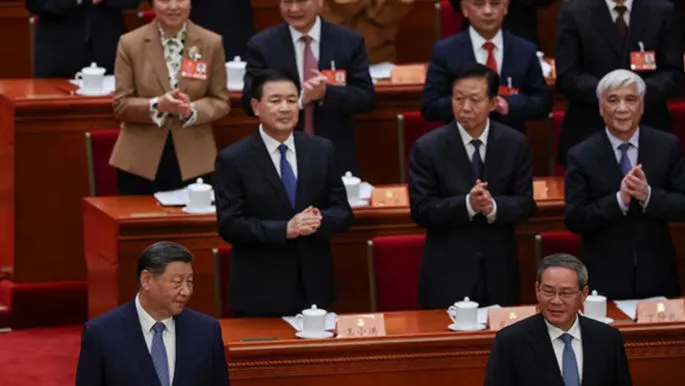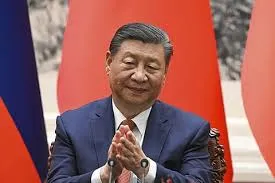China’s annual parliamentary session begins on Wednesday. Officials face increasing pressure to boost consumer spending and strengthen the economy. Meanwhile, the country struggles with rising U.S. trade tariffs and ongoing deflationary risks.
Economic Growth Target and Trade War Challenges
Premier Li Qiang will set a new economic growth goal for 2025. Last year, China barely met its 5% target, relying on last-minute stimulus measures. Now, the escalating trade war with the U.S., led by President Donald Trump, poses a major threat to China’s industrial sector. At the same time, weak domestic demand and a collapsing property market add further challenges.
Moreover, Trump has also warned other countries, including U.S. allies, about potential tariffs. This strategy disrupts the global trade system that China has depended on for decades.
Push for Consumer-Focused Policies
As a result, Chinese policymakers must act quickly. They need to stimulate household spending while reducing reliance on exports. Consequently, Li is expected to announce a larger budget deficit of 4% of GDP. Additionally, he may approve record-high debt issuance. Some of these funds will support expanded consumer subsidies for electric vehicles, home appliances, and other essential goods.
However, experts argue that China needs deeper reforms. Specifically, they call for changes in taxation, land policies, and financial systems. These structural adjustments could create a stronger social safety net, ensuring long-term economic stability.
“With deflationary pressures becoming entrenched against the background of an unfavourable external environment … boosting domestic household consumption demand is a key priority,” said Eswar Prasad, a trade policy professor at Cornell University.
He further emphasized, “One-off schemes might help at the margin, but durable measures to provide income support and strengthen the safety net are essential.”
Struggles for Businesses and Workers
Despite achieving 5% growth last year, many Chinese workers and businesses did not feel its benefits. Although China maintains a trillion-dollar trade surplus, many people face job insecurity and declining wages. As a result, companies are slashing prices and cutting costs to stay competitive.
Furthermore, Chinese manufacturers face weak domestic demand and harsher conditions in the U.S., where they export over $400 billion in goods annually. Therefore, many are now seeking alternative markets. However, this shift could trigger price wars and lower profit margins. It may also prompt policymakers in these new markets to impose stricter trade barriers.
Since taking office, Trump has steadily increased tariffs on Chinese imports. In fact, his administration has already added 20 percentage points to existing duties. The latest 10% increase took effect on Tuesday.
“We worry that they will add another 10% and then another 10%,” said Dave Fong, a Chinese manufacturer of school bags, toys, stationery, and electronics. “That’s a big problem.”
China’s Response and Future Strategy
In response, China swiftly announced countermeasures on Tuesday. Officials raised tariffs on U.S. agricultural and food products by 10%-15%. Moreover, they imposed export and investment restrictions on 25 American firms.
Since the pandemic, China has focused on technological advancements rather than consumer-driven growth. Accordingly, the government has invested heavily in advanced industries to compete with global rivals.
Notably, companies like electric vehicle maker BYD and AI firm Deepseek have gained international attention. However, experts warn that China must balance innovation with consumer demand to sustain economic growth.
“Technological aspirations and consumer demand growth are ‘competing priorities,’ and finding a balance between them ‘will be crucial for China to avoid the prolonged stagnation experienced by Japan,’” said Alicia Garcia-Herrero, Chief Asia Pacific Economist at Natixis.
She further explained, “The tangible impact of this innovation drive on growth, specifically through increased productivity, is not yet visible.”
Ultimately, while industrial growth remains a top priority, China must address economic imbalances to ensure long-term stability.























